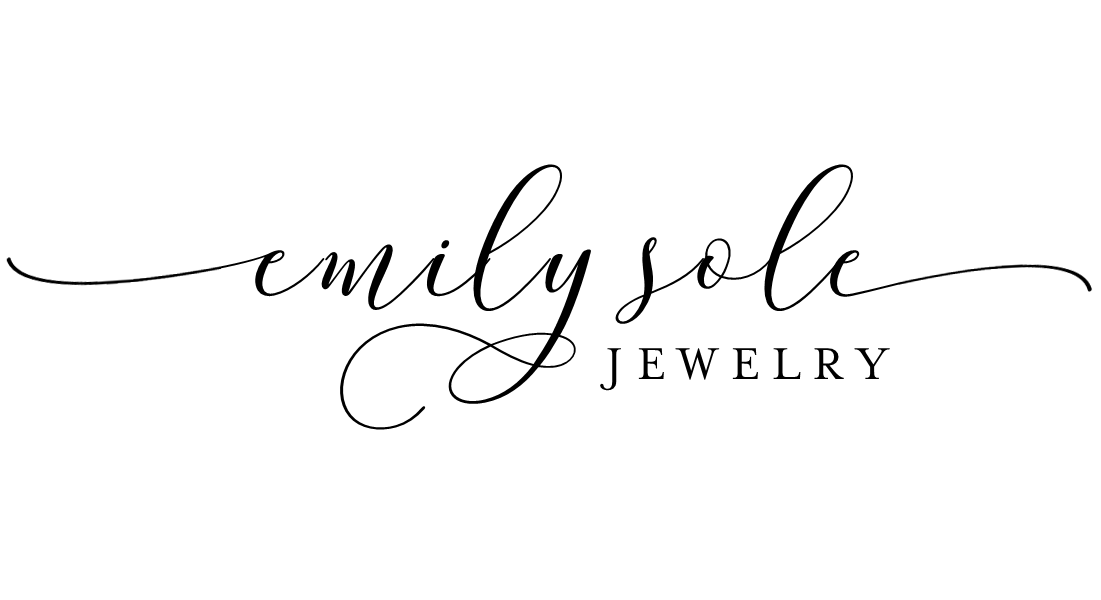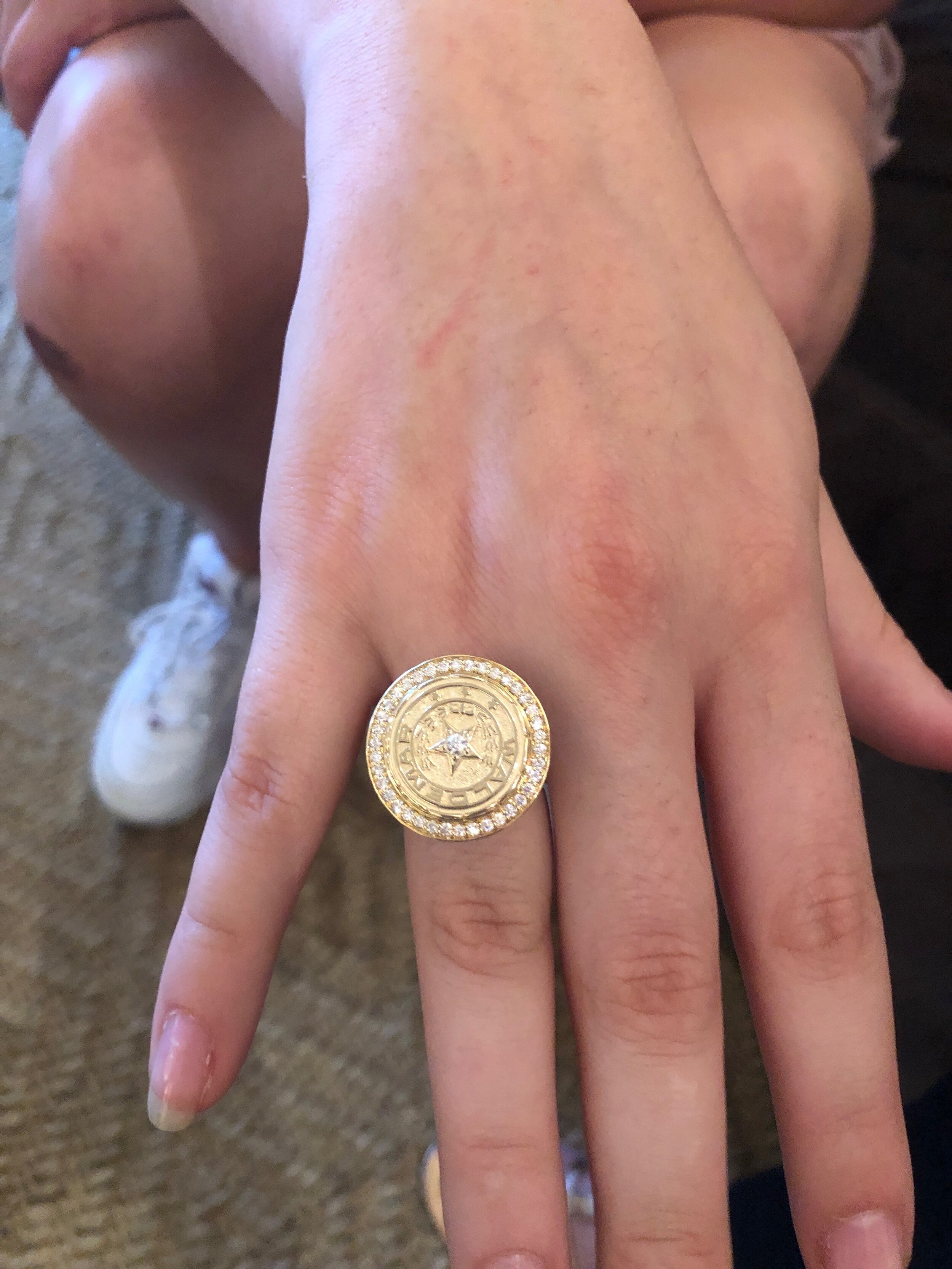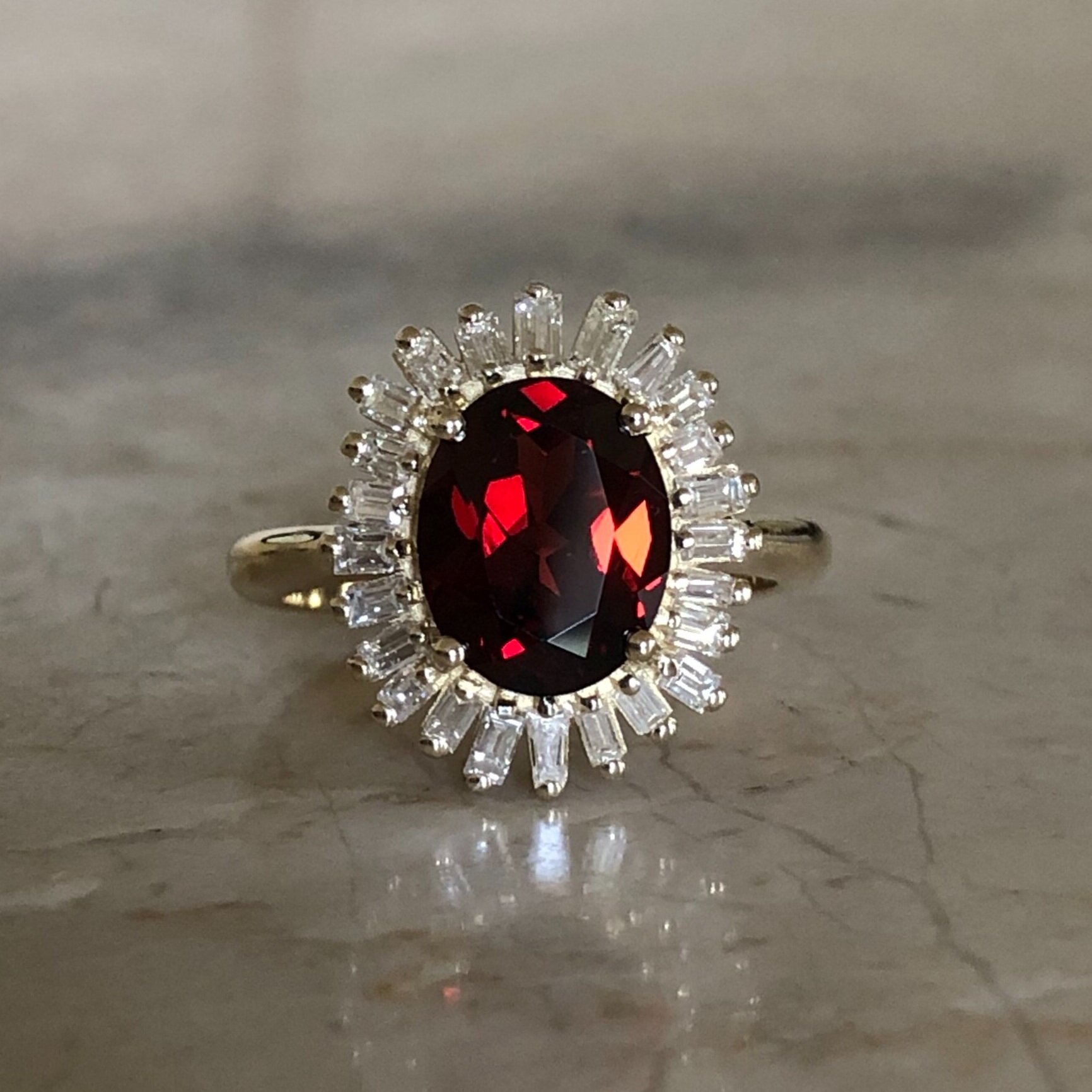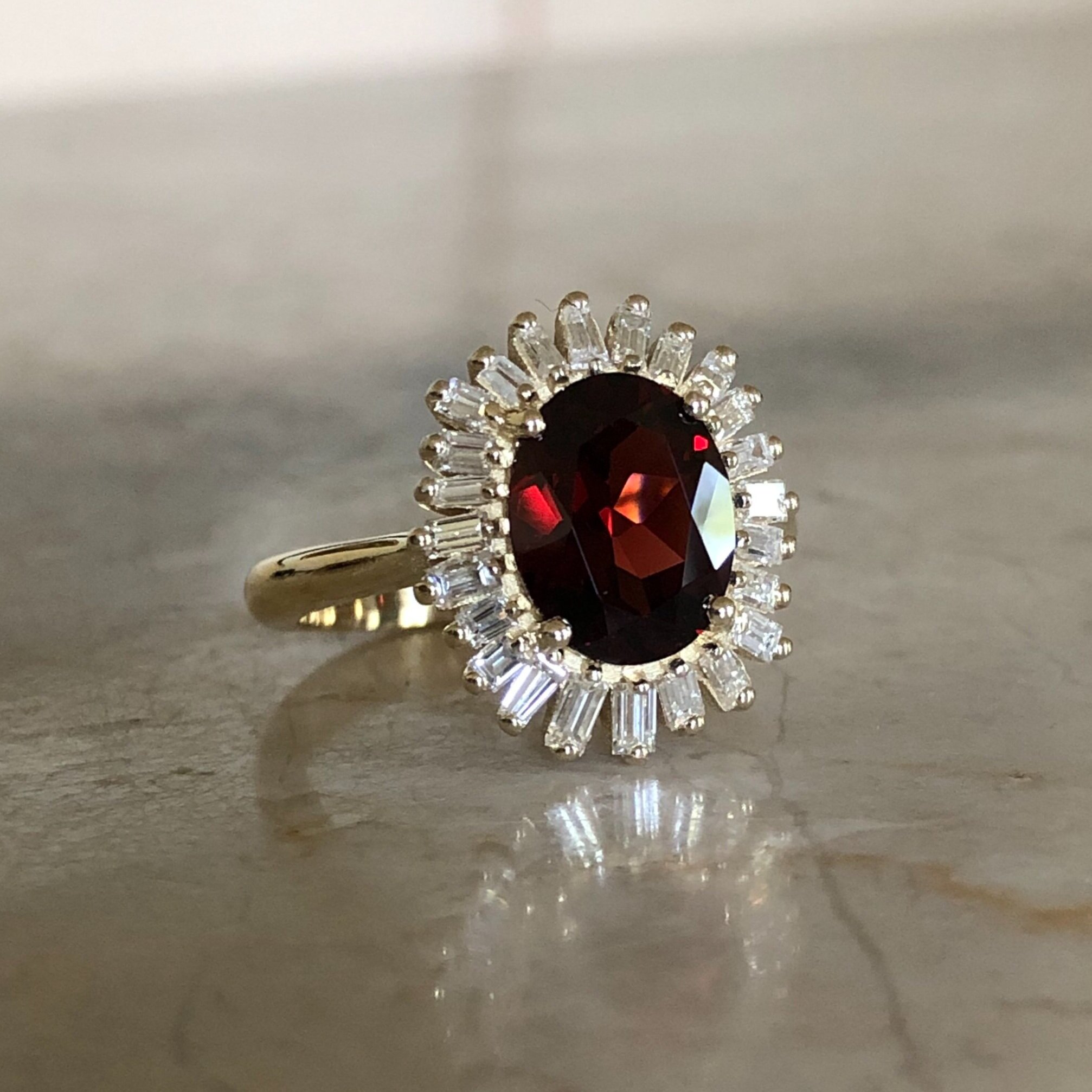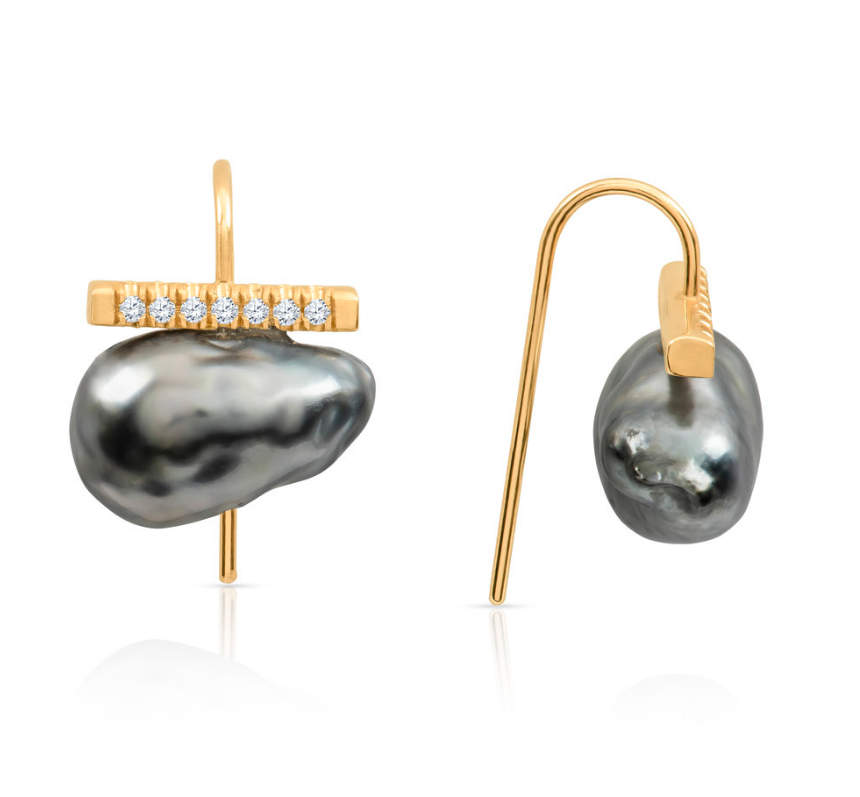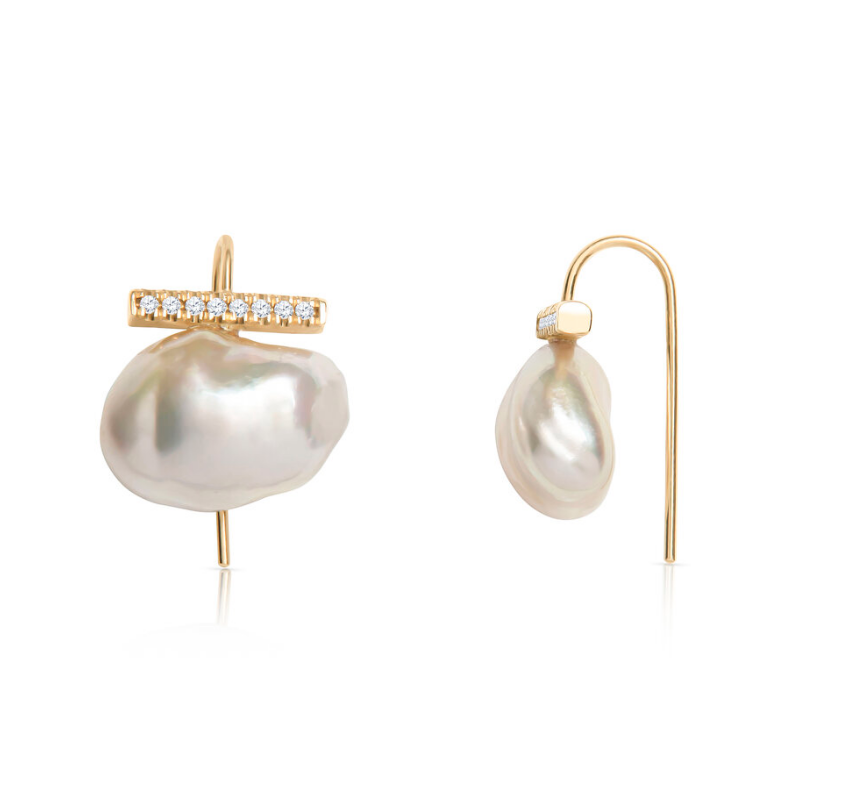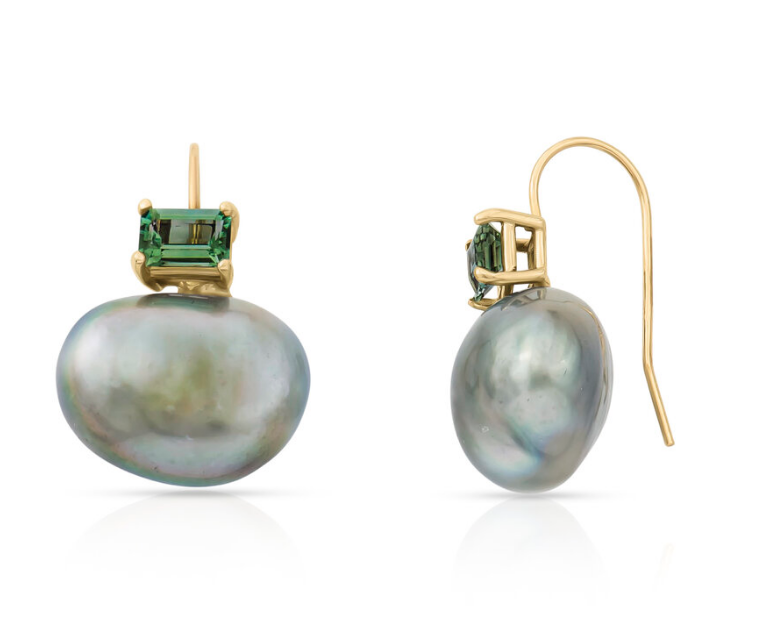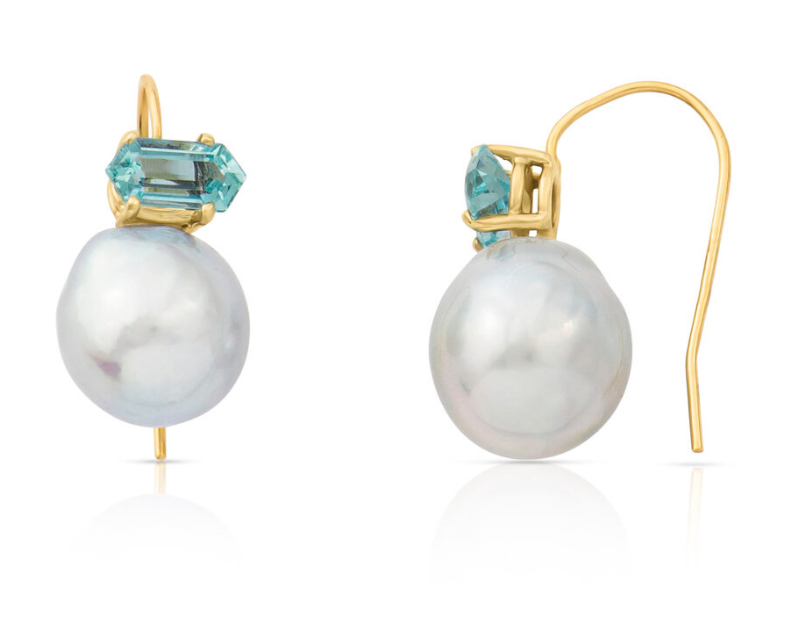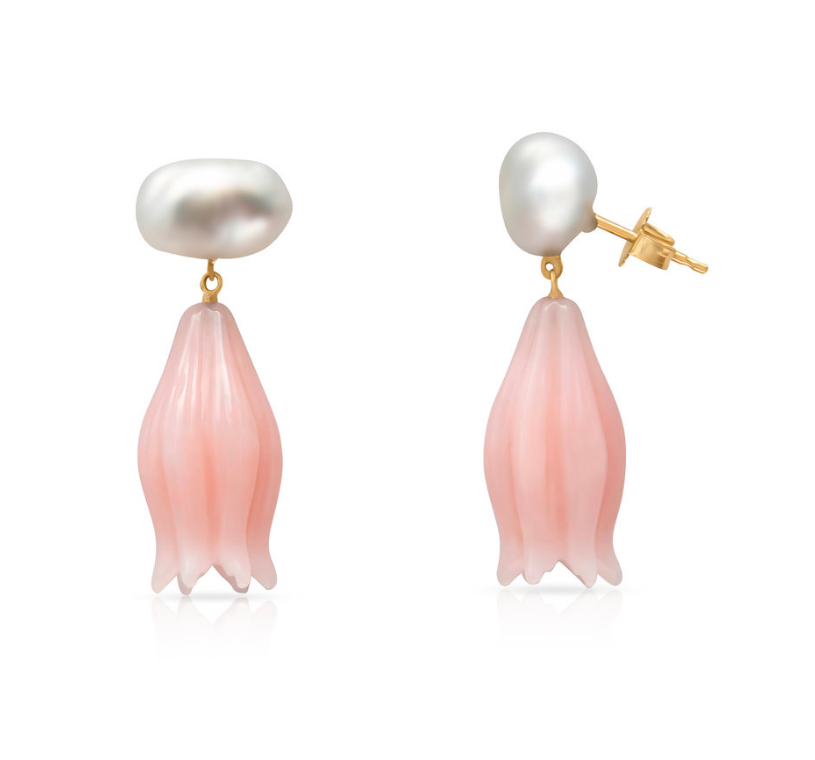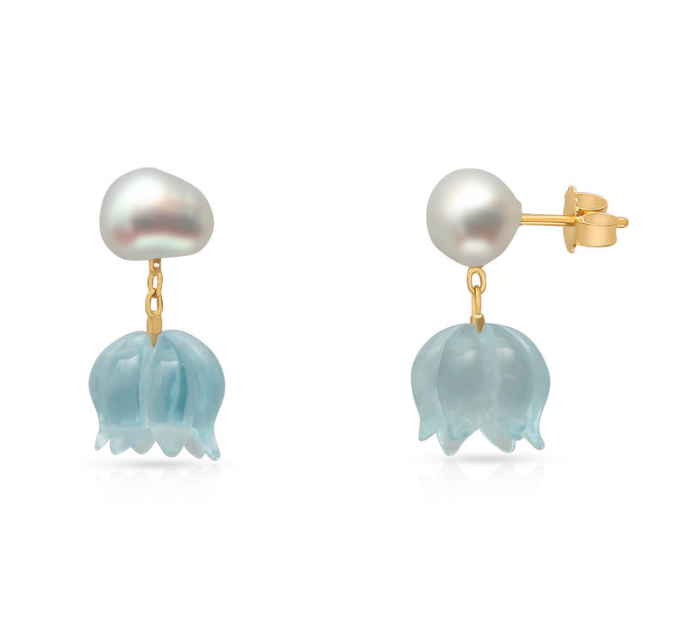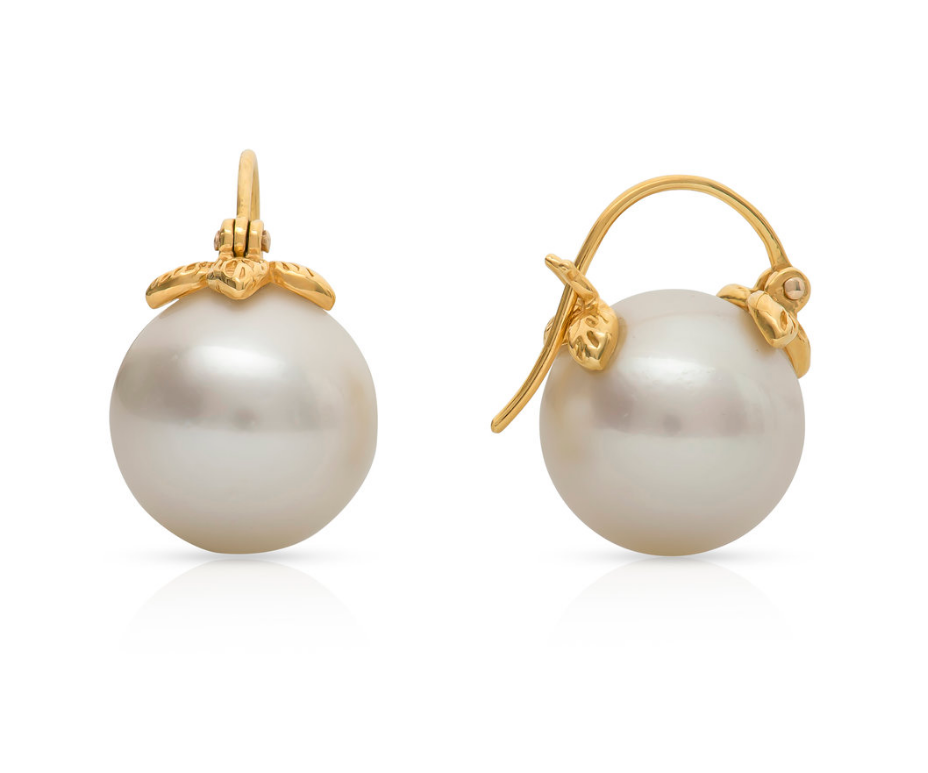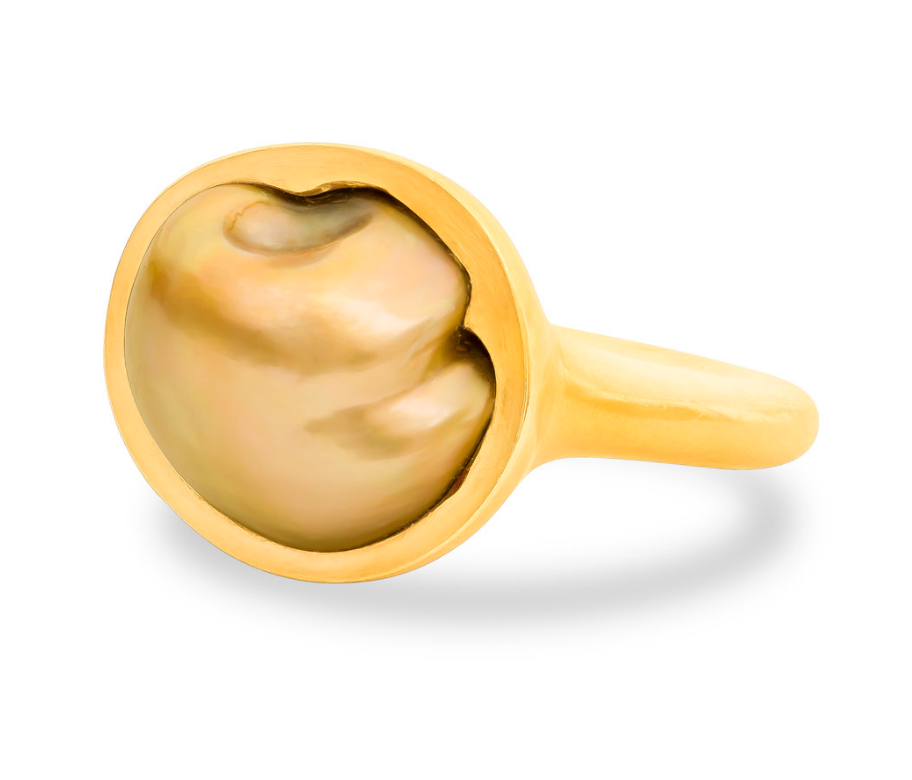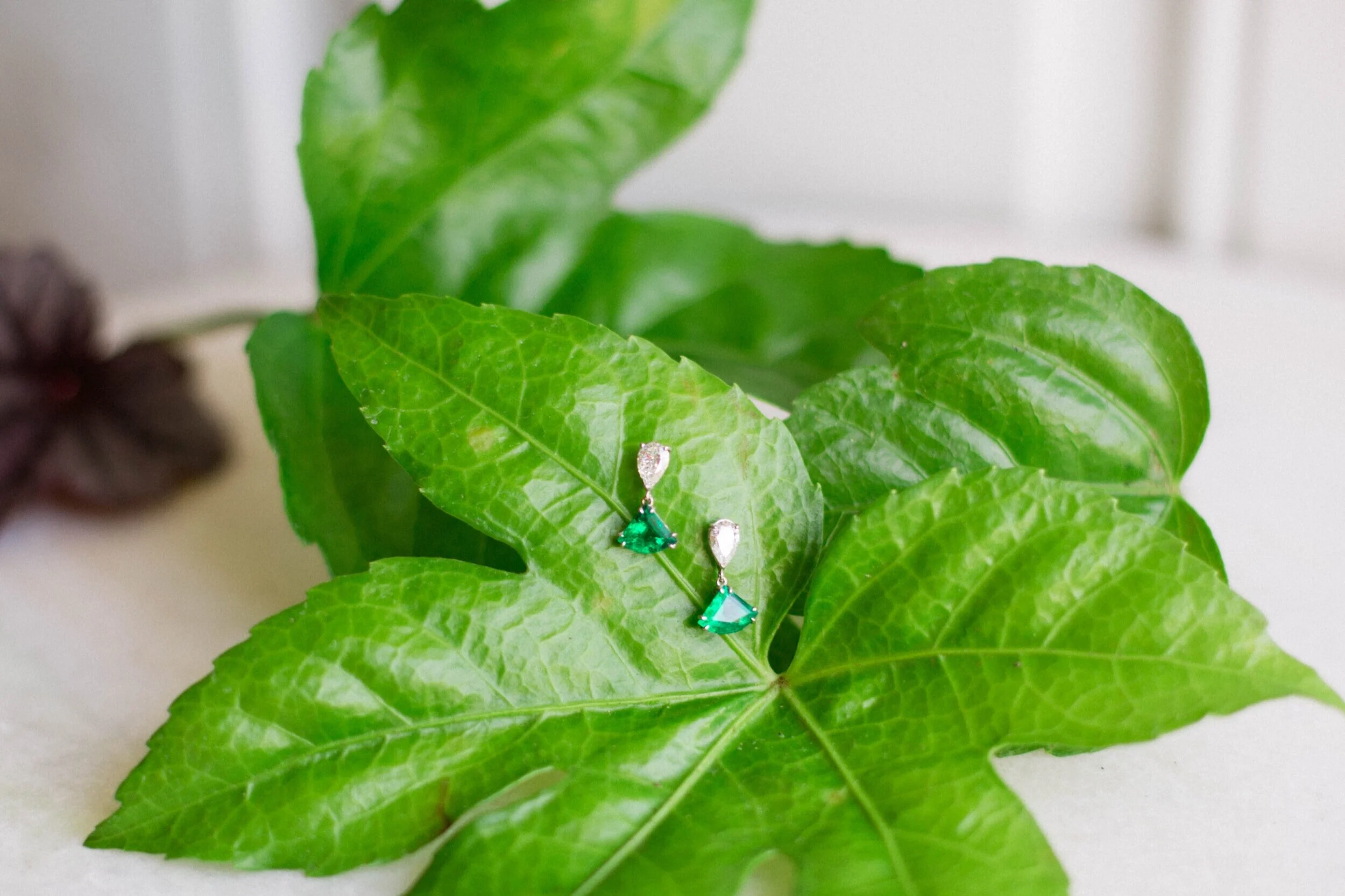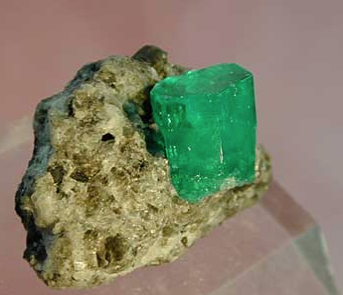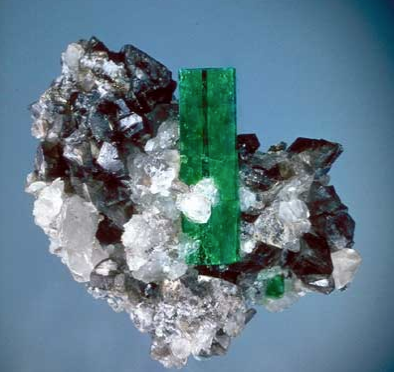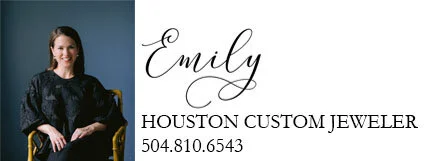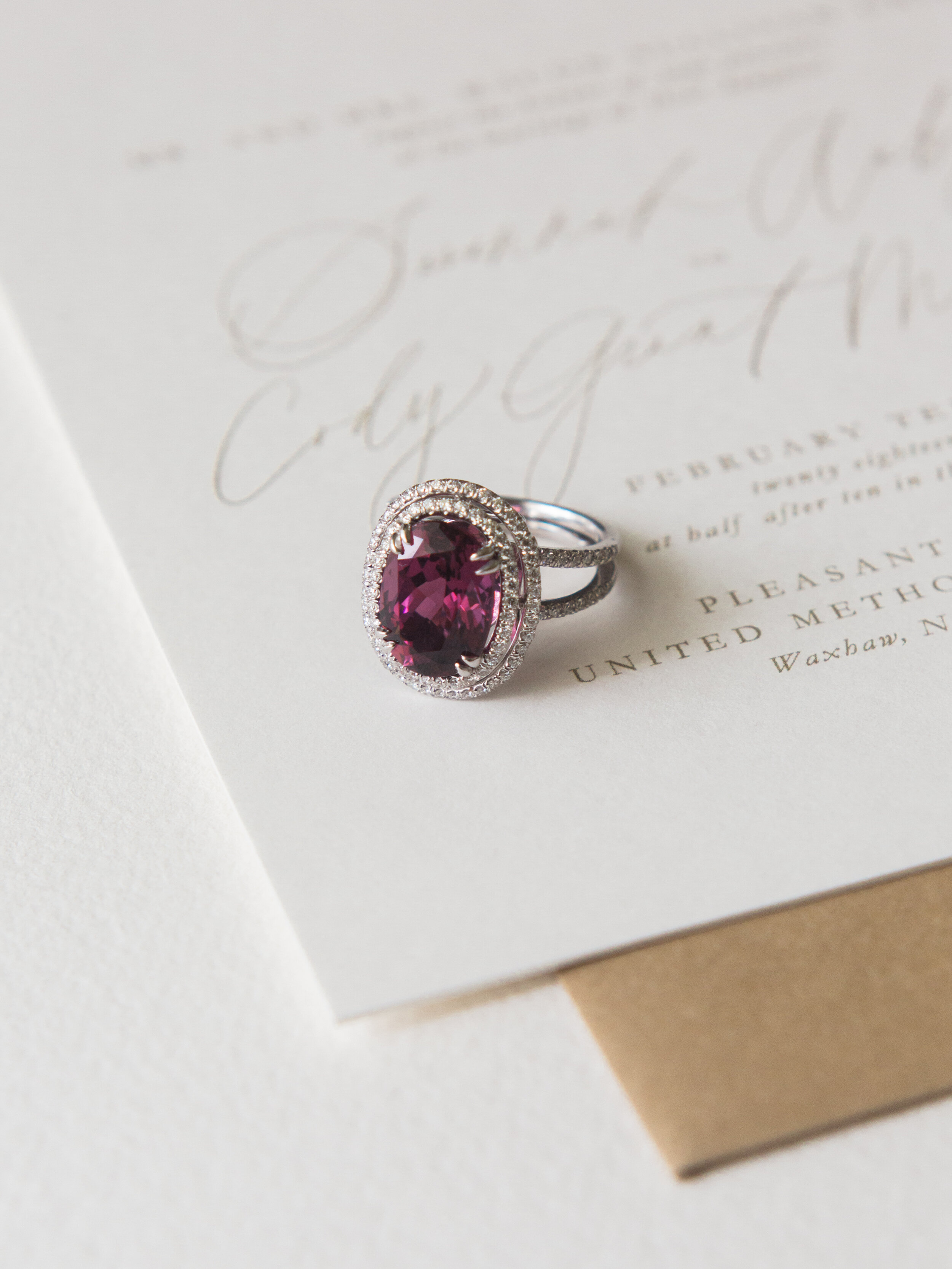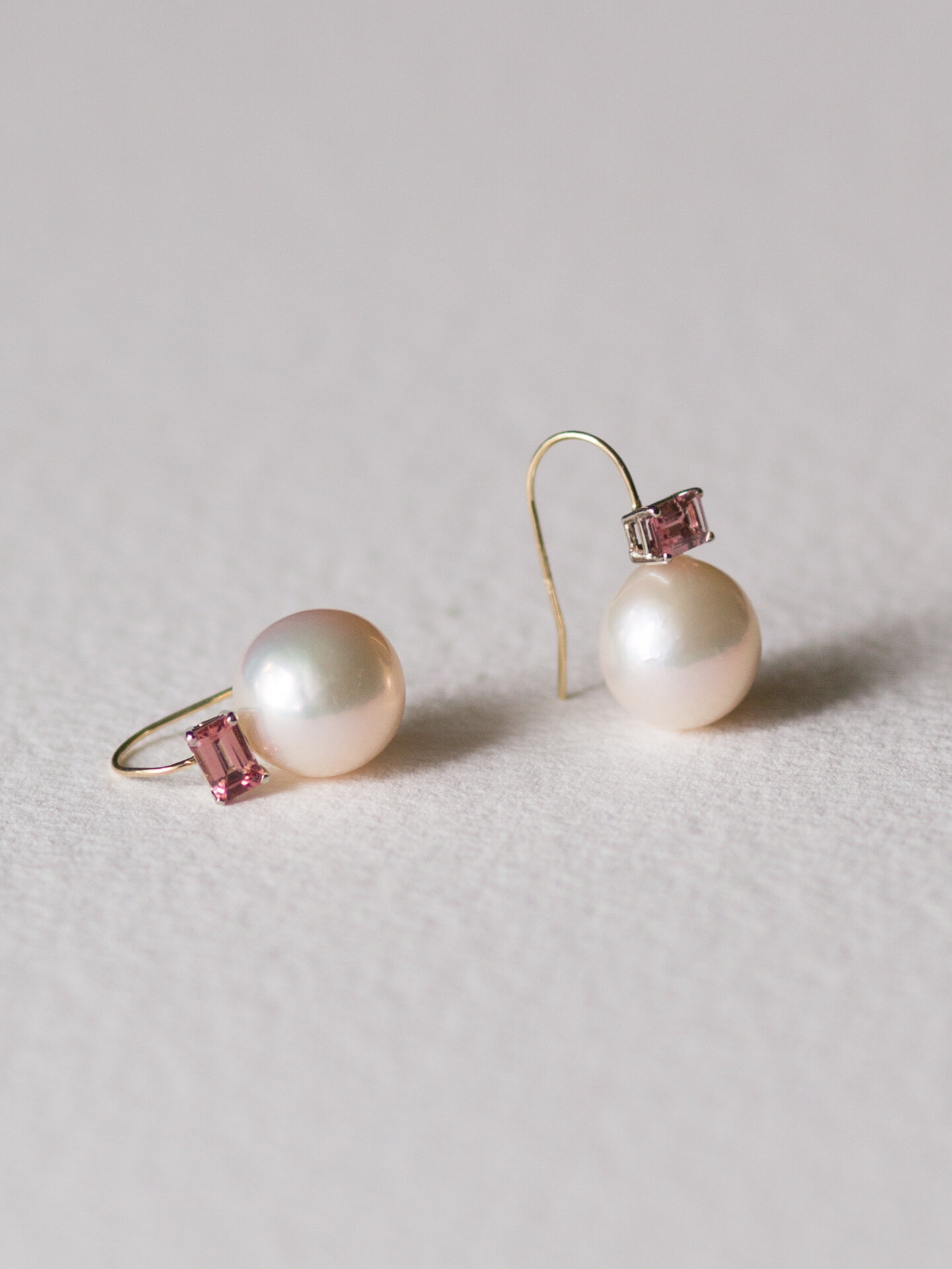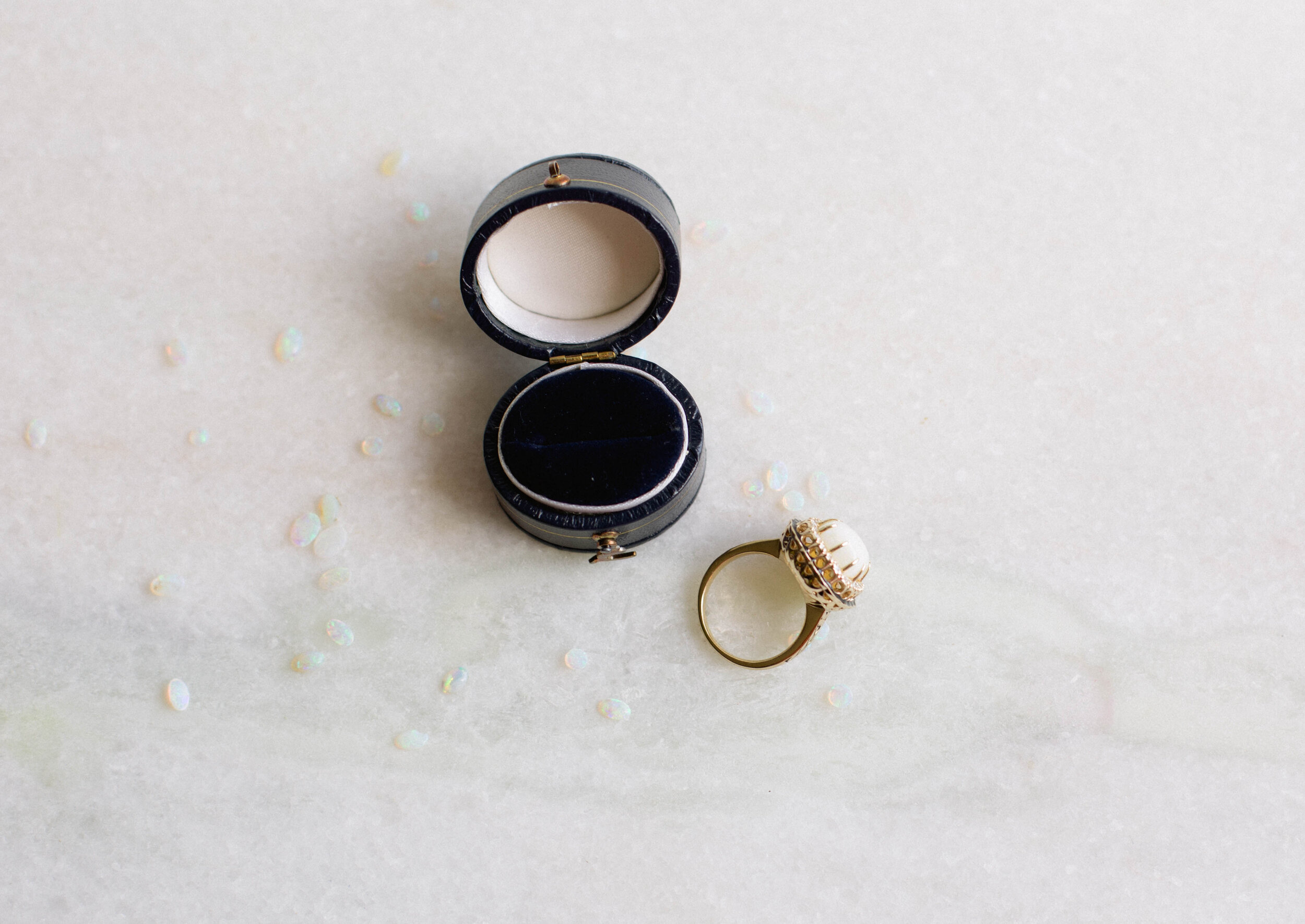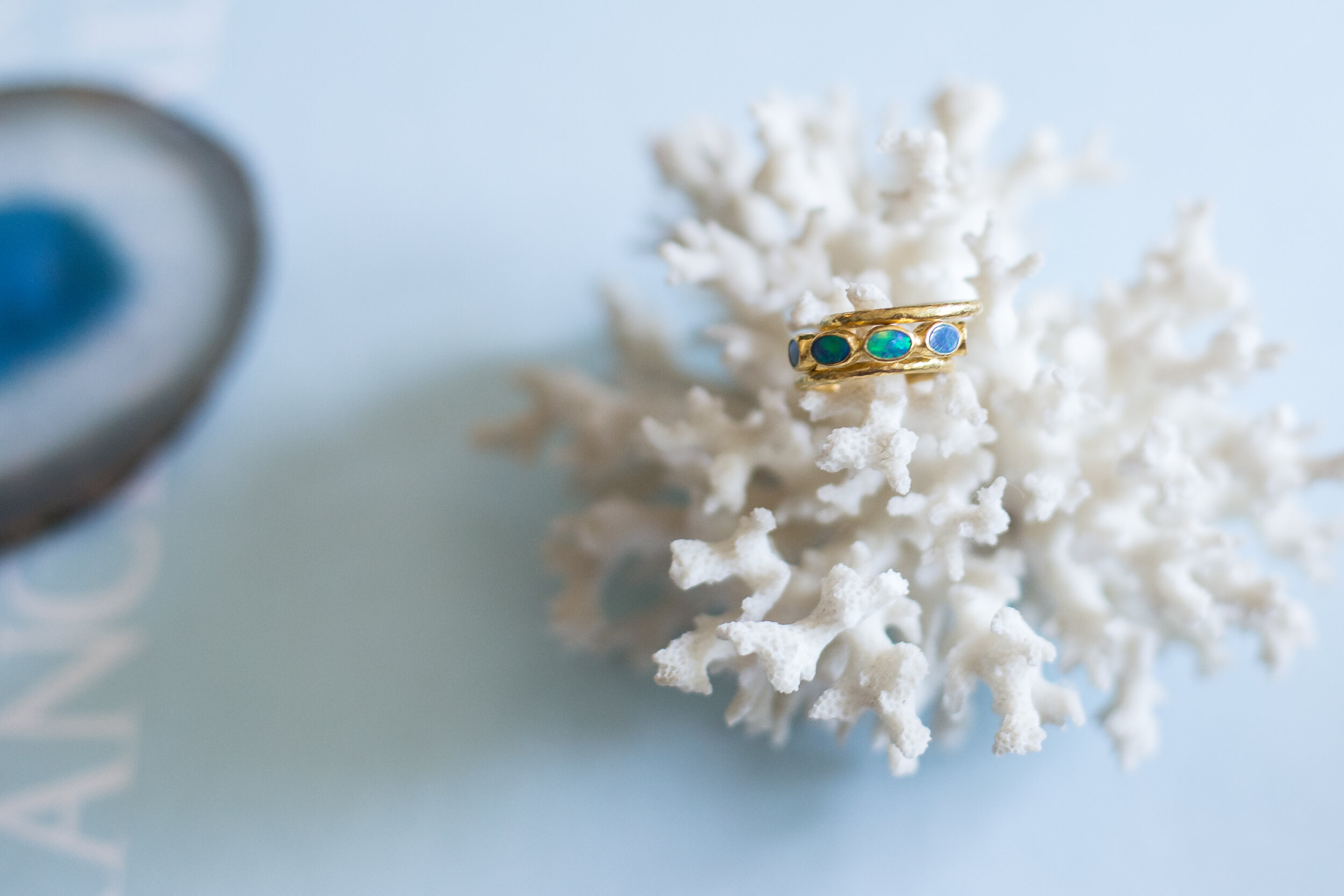January’s birthstone is the beautiful garnet! I wanted to show you 3 amazing, unique rings I’ve designed with garnets, followed by some interesting garnet facts.
This is a coin ring like no other! It was such an honor to be commissioned to make this special ring. The coin is from Camp Waldemar in Hunt, Texas. Camp Waldemar is an all girl’s camp that was founded in 1926.
We set her beautiful yellow gold coin with a delicate halo of diamonds and accented with tsavorite garnets descending down the shank of her ring. The gallery has open petals that make this ring truly one-of-a-kind!
This second ring has a beautiful garnet surrounded by a delicate halo of baguettes. It’s such a pretty and wearable right hand ring!
This last ring features a Tsavorite garnet that is flanked by a matching pair of round brilliant cut diamonds. It’s a sophisticated way to wear your birth stone as a right hand ring!
Alright friends. Let's talk s little bit about some garnet facts!
Not all garnets are red! Although garnets are more commonly in the red color range, there are also green, orange, and other colors.
Garnets score a 6.5- 7.5 on the Mohh's Scale of Hardness.
The term 'garnet' comes from an old word for pomegranate.
Low-grade garnet is used as an abrasive. When mixed with water, it has the ability to cut through materials like steel.
Tsavorite, a green variety of garnet, was first discovered in Tanzania.
Garnets are the suggested gift for the 2nd wedding anniversary.
If you’ve got a January birthday or know someone that does, shoot me an email to order a custom piece of birthstone jewelry!
